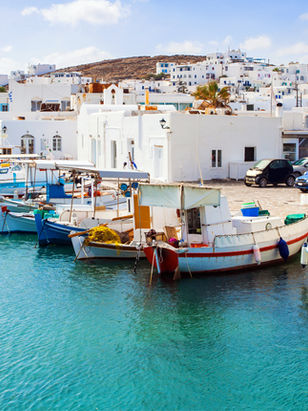Ancient Maori Healing: Traditional Wellness Practices in New Zealand’s Retreats
- Dr. K.

- Apr 9
- 4 min read
Updated: Jul 29
New Zealand’s Māori wellness traditions extend far beyond conventional spa treatments or modern wellness trends. For centuries, the Māori have practiced rongoā Māori, a traditional healing system that integrates plant medicine, bodywork, spiritual rituals, and deep connections to the land. These practices, deeply rooted in Māori cosmology, emphasize balance, harmony, and collective well-being.
Today, luxury lodges and wellness retreats across New Zealand are incorporating indigenous Māori healing traditions into their offerings, allowing travelers to experience the profound benefits of geothermal therapy, traditional bodywork, and native plant medicine in some of the most stunning natural environments on earth.
Māori Cosmology and the Spiritual Foundations of Healing
The Māori view of health and well-being is inextricably linked to nature, ancestry, and spiritual balance. Whakapapa (genealogy) connects every individual to Ranginui (Sky Father) and Papatūānuku (Earth Mother), reinforcing the belief that a person’s health is a reflection of their relationship with the land and their ancestors (Riki Tuakiritetangata & Ibarra-Lemay, 2021).
Unlike Western medicine, which often isolates symptoms, rongoā Māori addresses health as a holistic, interconnected system, considering the physical body, spiritual well-being, family, and environment. A study published in the International Journal of Environmental Research and Public Health emphasizes that restoring balance to one’s health requires restoring balance to one’s environment and relationships, a principle that continues to shape Māori wellness traditions today.
Whānau and Holistic Healing: The Role of Family in Māori Health
In Māori healing, individual health is not just personal—it is deeply tied to whānau (family) and hapū (extended kin groups). Healing ceremonies often involve karakia (prayers), waiata (songs), and storytelling, reinforcing emotional, spiritual, and communal well-being.
Tuakiritetangata et al suggest in Genealogy (2021) that Māori healing aims for the restoration of balance between four primary dimensions represented by the whare tapa whā (four walls of a house) model: tinana (physical body), wairua (life force and spirit), hinengaro (thoughts and feelings), and whānau (kinship ties). A growing body of research on indigenous mental health also supports the idea that culturally embedded healing practices contribute to resilience, emotional regulation, and lower stress levels. This aligns with modern psychological theories on collective healing and social support, where community participation in healing improves both mental and physical outcomes.
The Power of Māori Plant Medicine and Botanical Healing

One of the most respected aspects of rongoā Māori is its deep knowledge of plant-based medicine. Traditional healers, or tohunga rongoā, have passed down their botanical knowledge for generations, using native plants for a variety of health benefits.
Kawakawa – Known as the “King of Māori medicine”, kawakawa is used for digestive health, inflammation reduction, and skin healing. It is now widely found in herbal balms, teas, and holistic skincare lines throughout New Zealand.
Mānuka – The mānuka tree produces nectar, which is gathered by bees to create mānuka honey, world-renowned for its antibacterial and immune-boosting properties. Studies show that mānuka honey and mānuka oil are effective in wound healing, gut health, and respiratory treatments.
Harakeke (Flax) – Used traditionally to treat burns, rashes, and infections, harakeke contains powerful anti-inflammatory compounds similar to aloe vera. It remains a key ingredient in New Zealand’s natural skincare and wellness industries.
Where to Experience Māori Wellness in New Zealand

For travelers looking to experience authentic Māori healing traditions, several luxury lodges, geothermal spas, and wellness retreats have embraced rongoā Māori principles in their offerings.
Owned and operated by Ngāti Whakaue, this luxury geothermal spa integrates indigenous healing traditions into its treatments. Guests can experience ritual geothermal soaking, mineral-rich mud therapies, and Wai Whakaora body treatments, which include traditional Māori massage techniques and spiritual incantations.
Aro Ha Wellness Retreat (Glenorchy)
Aro Ha is one of New Zealand’s most celebrated wellness retreats, offering mindfulness-based programs that incorporate Māori principles of balance and nature-connection. The retreat includes guided hiking, yoga, and organic plant-based cuisine inspired by Māori holistic health philosophies.
Huka Lodge (Taupō)

Celebrating over 100 years of luxury hospitality, Huka Lodge in Taupō provides a wellness experience deeply connected to nature and Māori traditions. The lodge’s spa treatments draw from local geothermal waters, and its cultural storytelling experiences give guests a deeper understanding of Māori cosmology and healing rituals.
Located along the pristine Maruia River, this boutique retreat blends Māori-inspired wellness traditions with modern luxury. It offers forest bathing, yoga, and traditional rongoā Māori herbal infusions, aligning guests with nature’s rhythms and indigenous wisdom.
Māori Healing in the Modern Wellness Landscape
As global wellness trends shift toward holistic, nature-based healing, Māori healing traditions are gaining worldwide recognition. The Māori concept of hauora (holistic well-being) emphasizes that true wellness is not just physical—it requires harmony between mind, body, community, and land.
The resurgence of rongoā Māori aligns with modern integrative medicine, which recognizes the mental health benefits of plant-based medicine, geothermal therapy, and indigenous knowledge systems. Research confirms that natural environments, community-driven healing, and spiritual practices lead to better long-term health outcomes (Riki Tuakiritetangata & Ibarra-Lemay, 2021).
This aligns with findings from studies on the world’s Blue Zones—regions known for exceptional longevity—where strong community ties, a deep connection to nature, and cultural traditions play a critical role in overall health and increased lifespan.
Bibliography
Buettner, D. (2021). The Blue Zones Challenge: A 4-Week Plan for a Longer, Better Life. National Geographic Books. URL: https://danbuettner.com/books/blue-zones-challenge/
Huka Lodge. (n.d.). Retrieved from https://hukalodge.com
Marques, B., Freeman, C., & Carter, L. (2021). Adapting Traditional Healing Values and Beliefs into Therapeutic Cultural Environments for Health and Well-Being. International Journal of Environmental Research and Public Health, 19(1), 426. Retrieved from https://www.researchgate.net/publication/357559522_Adapting_Traditional_Healing_Values_and_Beliefs_into_Therapeutic_Cultural_Environments_for_Health_and_Well-Being
Mark, G., Boulton, A., & Allport, T. (2022). Ko Au te Whenua, Ko te Whenua Ko Au: I Am the Land, and the Land Is Me. International Journal of Environmental Research and Public Health, 19, 8547. Retrieved from https://pubmed.ncbi.nlm.nih.gov/35886397/
Riki Tuakiritetangata, D., & Ibarra-Lemay, A. (2021). Tūhonotanga—A Māori Perspective of Healing and Well-Being through Ongoing and Regained Connection to Self, Culture, Kin, Land, and Sky. Genealogy, 5(55). https://doi.org/10.3390/genealogy5020055
Te Papa. (n.d.). Māori Medicine. Museum of New Zealand. Retrieved from https://www.tepapa.govt.nz/discover-collections/read-watch-play/maori/maori-medicine




































































































